Alteration of the PSU of the IBM 5150 model A 230 V computer
- Transfer

What if you suddenly got a beautiful vintage IBM 5150? The first thing is not to rush to turn it on, but to look at the PSU, which may turn out to be 115-volt. And then you have to fence such a thing:
But the retrocomputer Matt Millman decided to “teach” this stylish PSU to operate from 230 V without additional devices. I’ll immediately give a disclaimer: since the alteration concerns the primary side of the block, if you don’t have this ... in general, retrocomputing is so multifaceted that there is another interesting lesson in it for you, even more complicated. old_gamer , for example, for the same 5150 assembled a new motherboard. Therefore, I do not put the Tutorial daw.
The PSU turned out to be pulsed and single-cycle - like modern ones: a
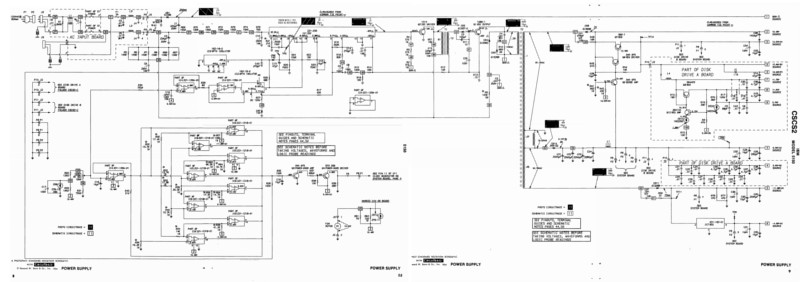
picture with a width of 5000 pixels
There are other options for the block scheme, but their differences from the base are insignificant. But the main thing is that he has a doubler at the entrance. The entire primary side is powered by two series-connected capacitors, the total voltage on which is 325 V. In general, everything is like in a 230-volt power supply, but instead of the input bridge it is a doubler:

After talking about this on the forum , the author found out that there are 230- a volt version of this PSU, but there the whole primary side is very different. Therefore, he decided to come up with his own way of rework, in which he did not have to "plow" half the board lengthwise and across.
He decided to replace the doubler with a KBPC610 bridge, at the same time installing a thermistor with a negative temperature coefficient instead of resistor R1. And even modeled how the inrush current will decrease as a result:

Many more modern PSUs have switches for choosing between a doubler and a bridge. It's not so simple here. An additional load hangs on the capacitor C2, so the voltage distribution on the capacitors C1 and C2 will be uneven after replacing the doubler with the bridge, and C1 will burst.
From a midpoint through a long chain of resistors R69 - R75, IC1 type NE5560 chip with a built-in zener diode voltage of 21.4 V is fed. .

With the resistors shown in the diagram (6 pcs. 1.5 kOhm and 1 pc. 750 Ohms), the current through them and the integrated zener diode of the microcircuit will be 14 mA:
(162 V - 22.9 V) / 9750 Ohm = 0.014 A = 14 mA
After transferring the power point of the chain, its overall resistance will have to be increased to:
(325V - 22.9 V) / 0.014 A = 21578 Ohms = 21.5 kOhm
But the author turned out to have such a power supply, where all 7 resistors are 1.5 kilo-ohms, it became the current will be:
(162 V - 22.9 V) / 10500 Ohm = 0.0132 A = 13 mA
And after the alteration, the chain resistance should be:
(325 V - 22.9 V) / 0.0132 mA = 22886 Ohm = 22.8 kOhm
The next task is to do something with the test point 36. The voltage is supplied to it from two places: from the lower one according to the output circuit of the 100-kilo ohm resistor R9 and from the lower terminal of the “fumigator” of six parallel connected 100-kiloohm resistors R5, R6, R7, R8, R66, R67.

You don’t need to do anything with R9, but all the “fumigator” resistors will have to be replaced with 200-kilo-ohms, since the upper output of this will also be transferred to the plus of the C1 capacitor. The current will remain equal to 7 - 8 mA, as with power from 115 V to alteration.
Now, in parallel with each of the capacitors C1, C2, it is necessary to connect a resistor of 120 kOhm, 2 W, this will certainly equalize the voltage across them despite the variation in parameters. If you, reading all this, fell asleep from boredom, wake up. For now the same thing, only briefly and succinctly. It was like this:

But it was like this:
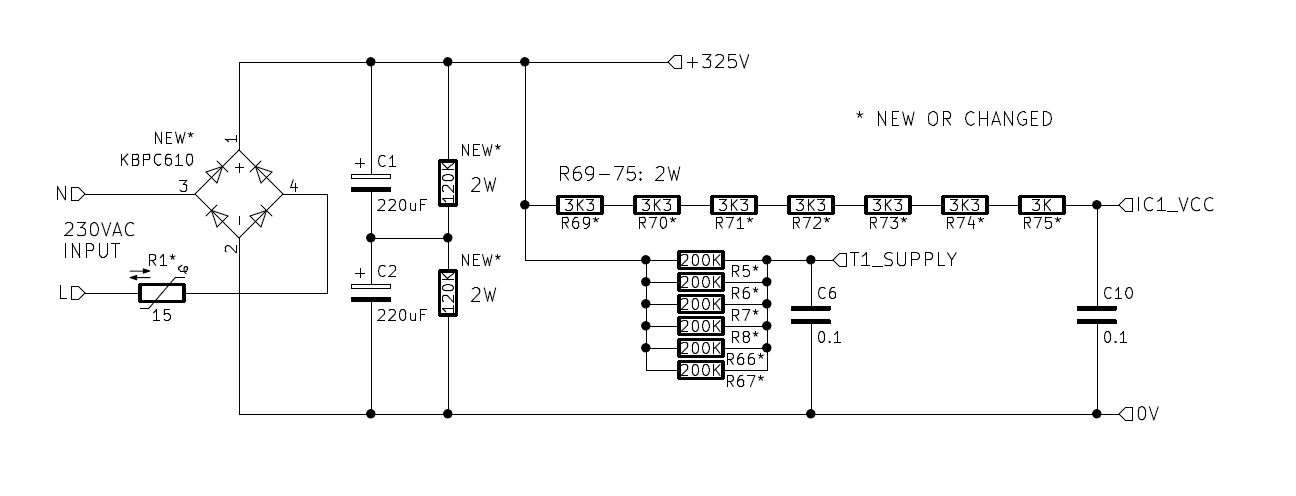
Here's the board before the alteration: Hereafter
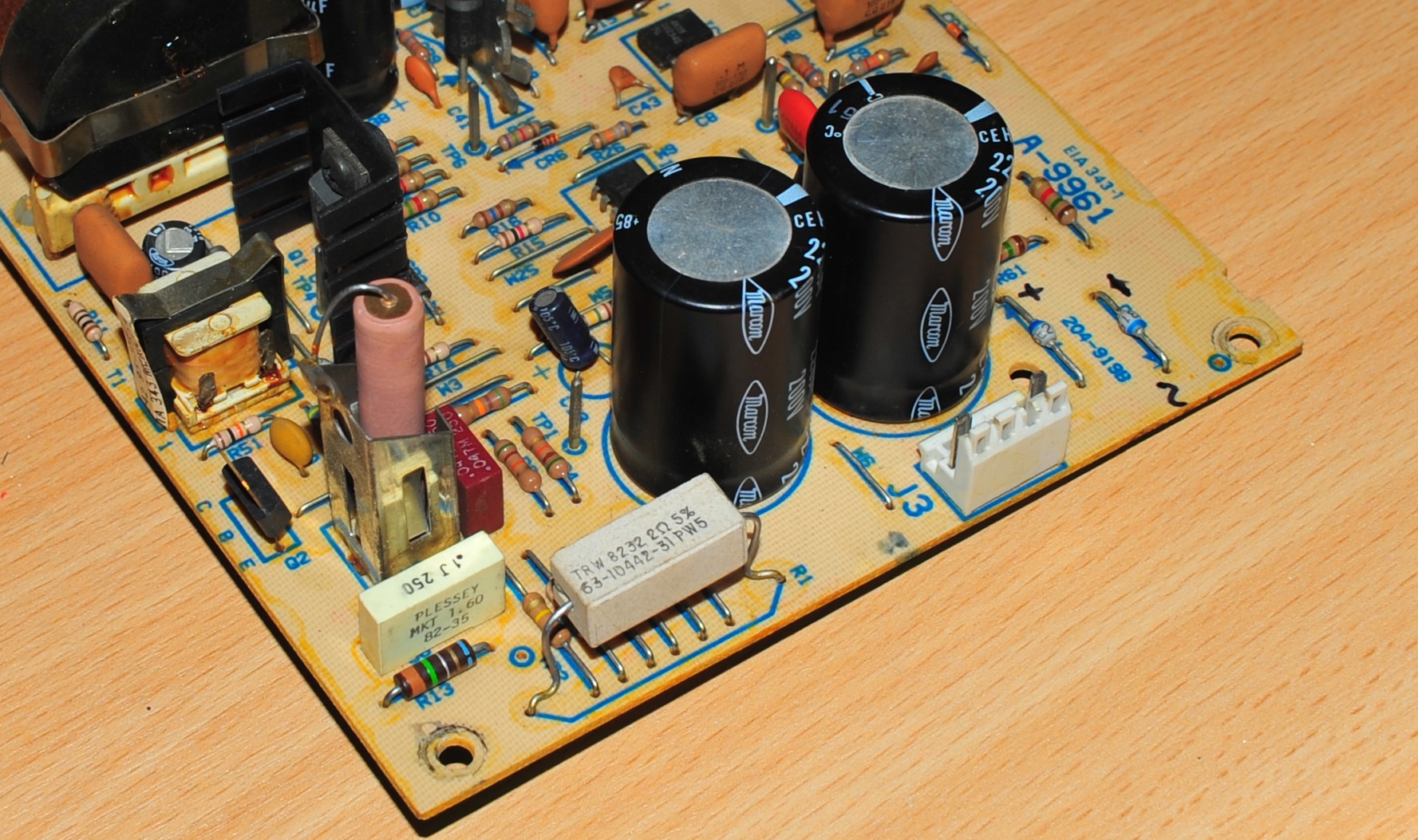

:
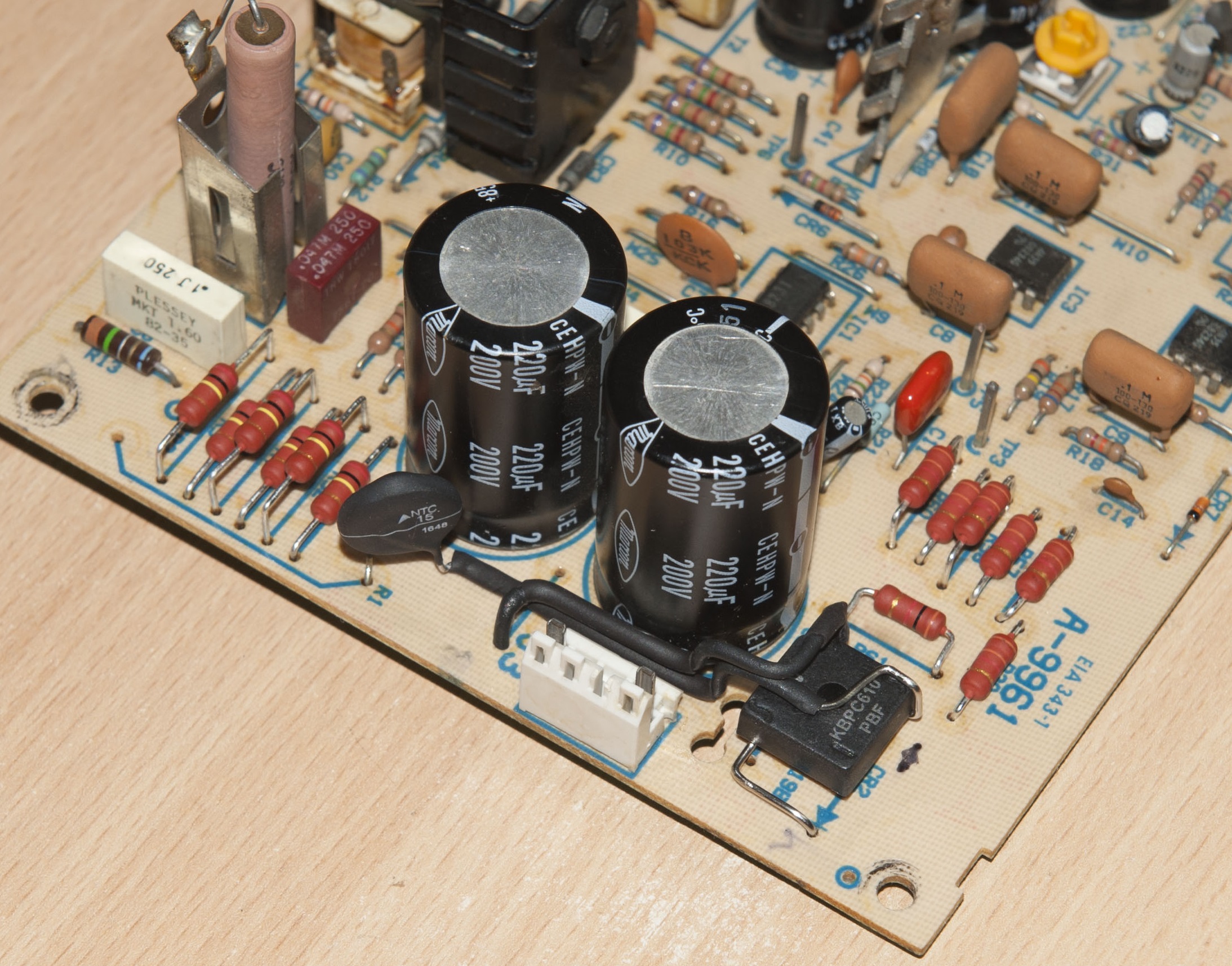
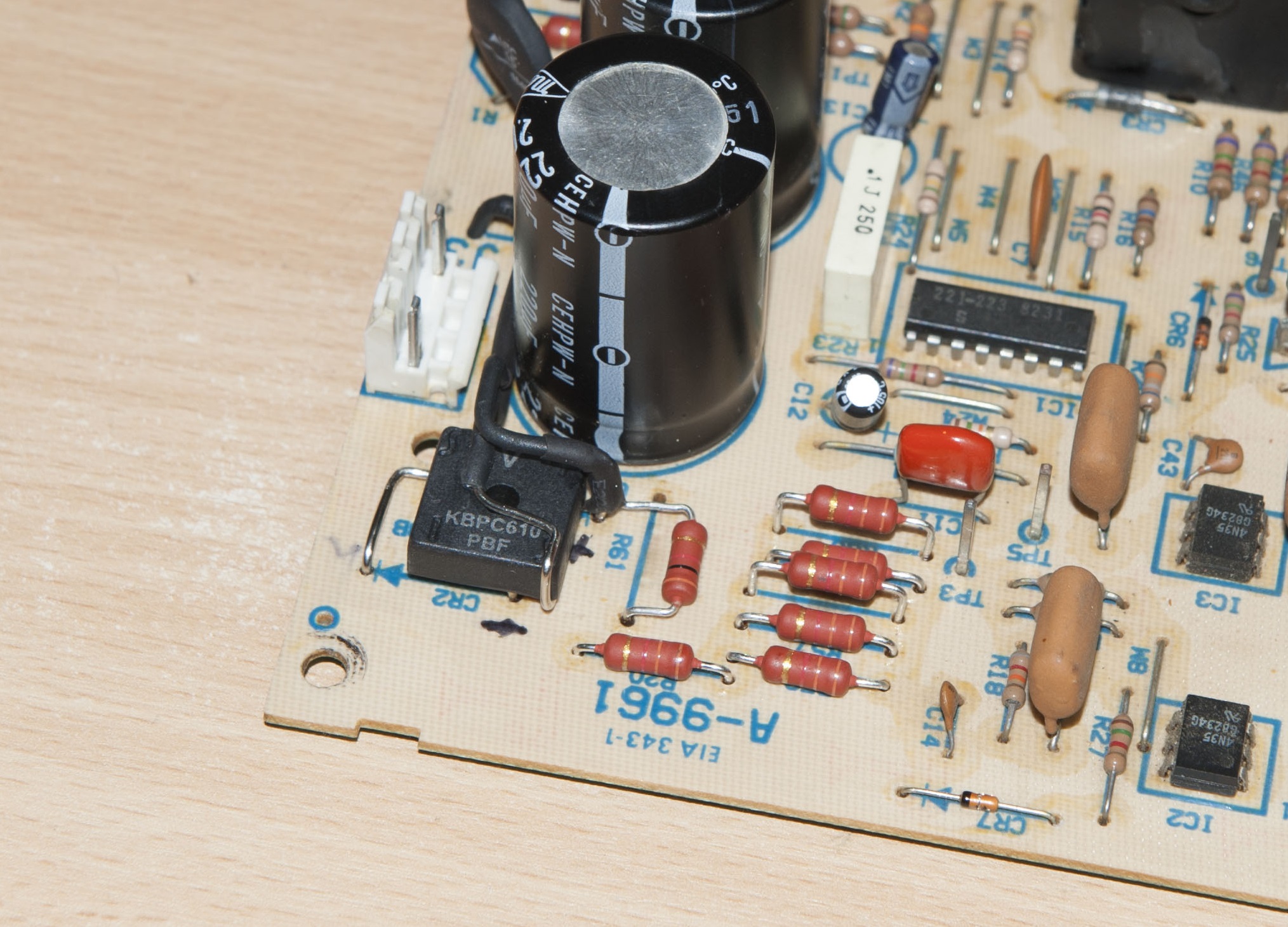
Even Kokovin (what’s there, even Pikachu062), looking at this, will say that “outEnteness” is almost not broken.
A hard wire with a diameter of 1 mm was used for the jumpers (in fact, usually for the wires they indicate not the diameter, but the section), placed in heat shrink.
120-kilo-ohm resistors connected in parallel with capacitors are soldered from the back of the board. They should not touch the board or the case!

It was the turn of the alteration of the interference filter. There were capacitors designed for 125 V (for such capacitors they often indicate not the amplitude but the actual voltage value):

They had to be replaced by the same, but 250-volt ones, such as Kemet PHE844RD6100MR30L2. And the resistance of the resistor discharging them after a trip is increased from 300 to 560 kOhm.
Can I turn it on? No matter how! Again, recall Pikachu062 with its catchphrase: “it will burn without a cooler”. And here the cooler itself will burn (if it is, in some such PSUs it does not exist at all). Because then the fans in the PSU were fed not by a constant from the output, but by a change from the input. Recall the BP "Electronics-60", there it is.
In general, it is necessary to replace the 115-volt fan with the 230-volt one, preserving the original rare Molex 90331 connector. An improvised tool from the turned hanger helped to remove the contacts from the original connector: The
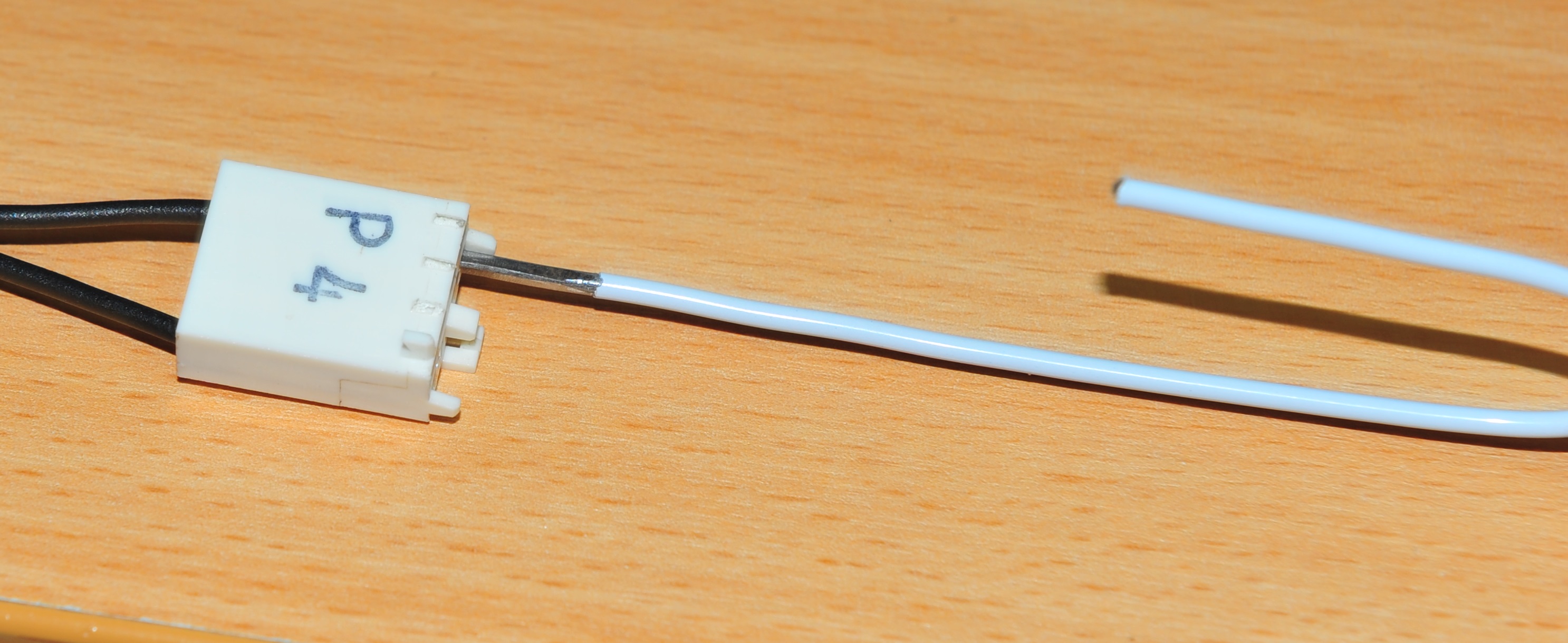
new ones could not be found, the Molex website says that they will approach this connector others, such as KK .156 (KK396) .
The original Rotron “Sprite” SU2C1 fan has not been discontinued so far:
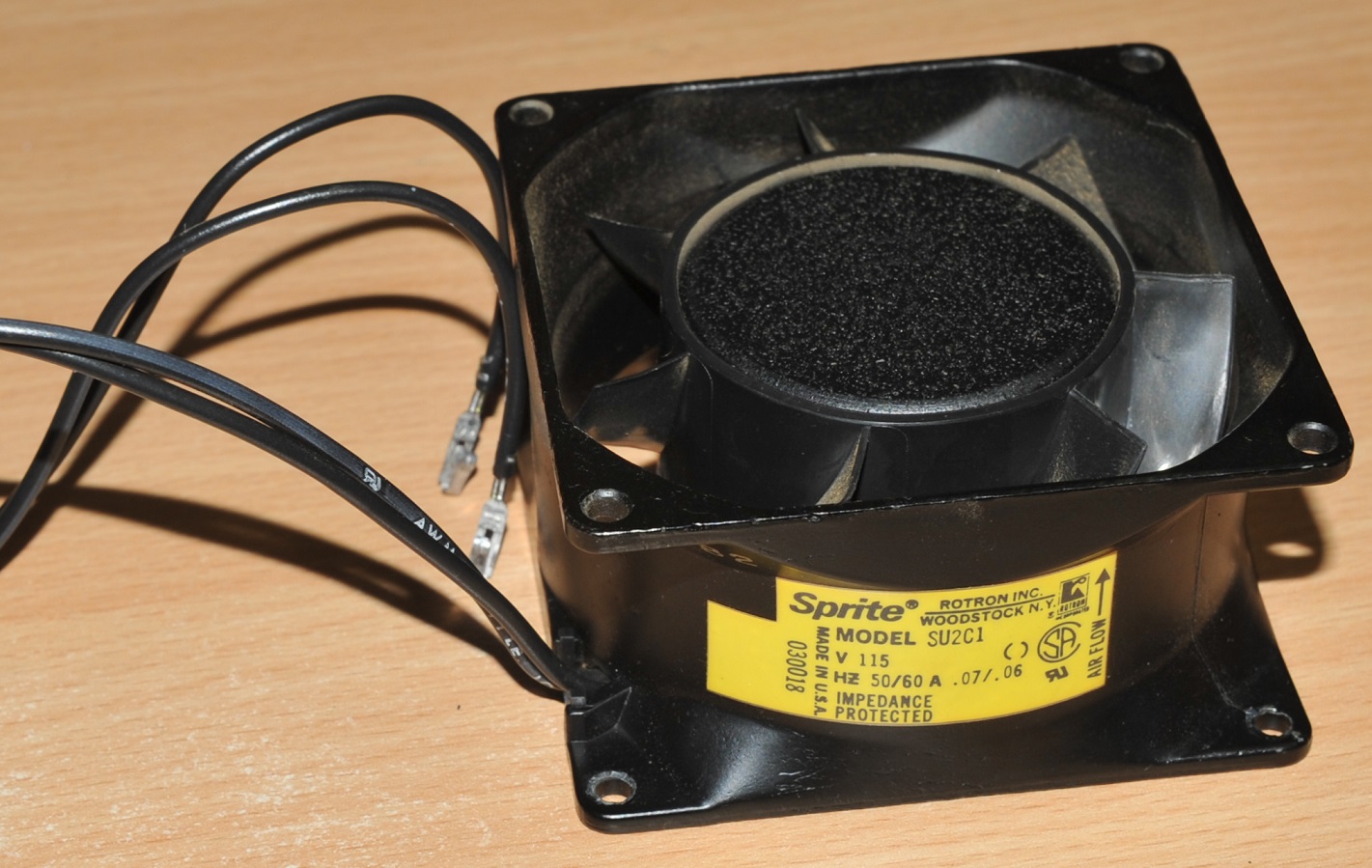
I had to replace it with SU3B1, which differs only in supply voltage, and rearrange the original connector with new contacts on it:
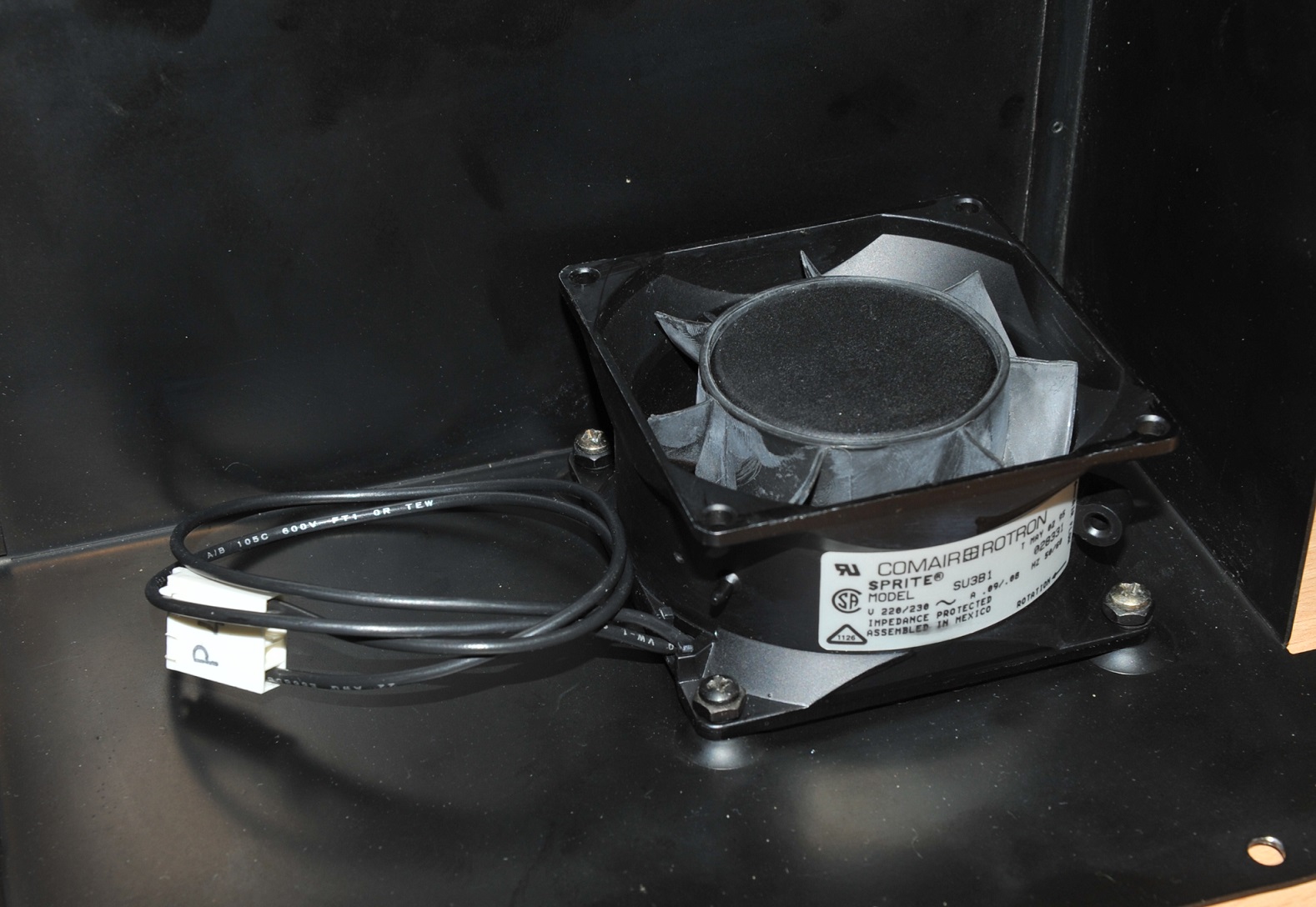
EBM PAPST 8556N is also suitable:
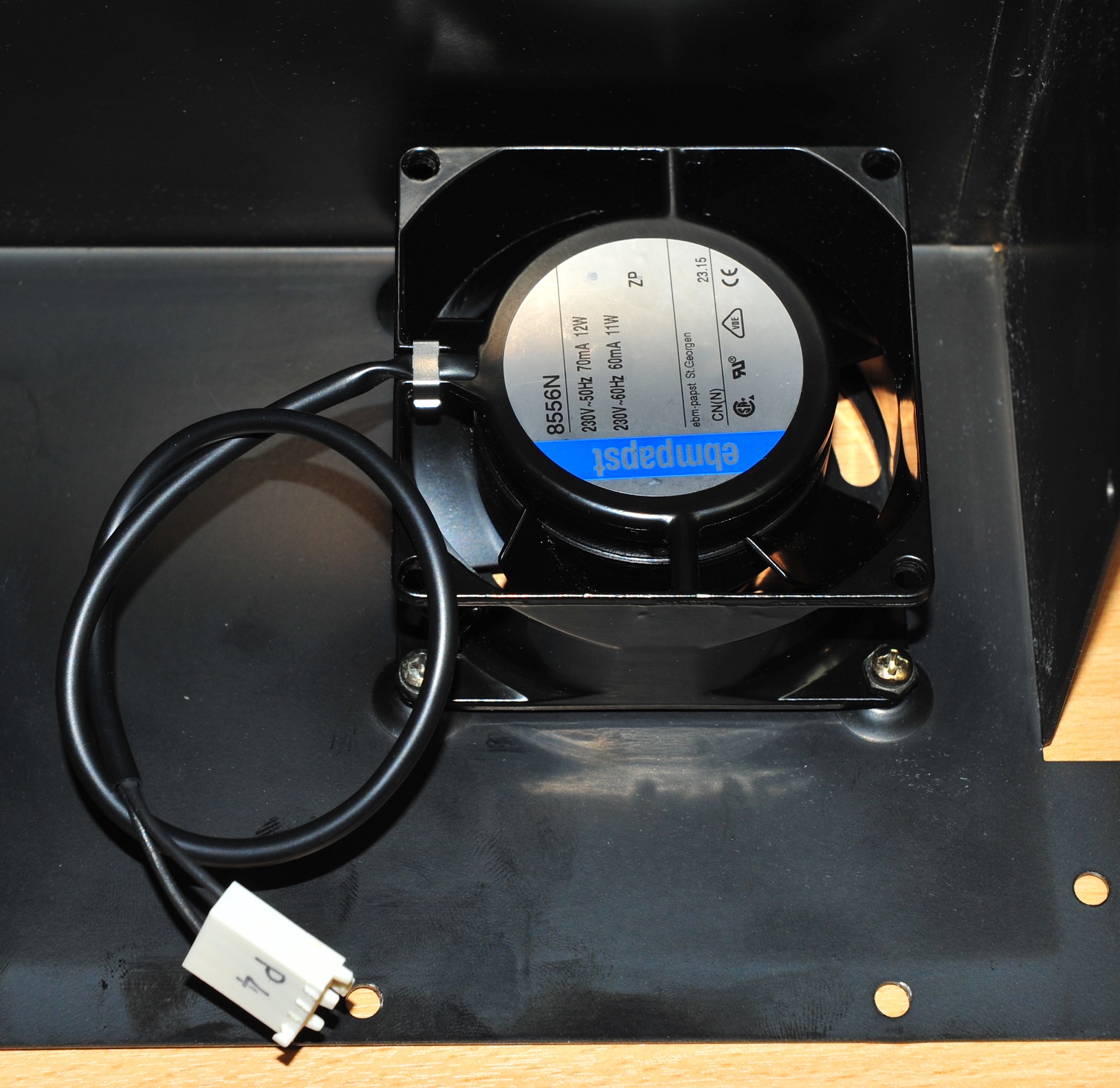
But it blows in the other direction, so it will have to be deployed accordingly.
In those years, pulsed power supplies were designed so that they cannot be turned on without load. But if you really want to, then you can through a 40-watt incandescent lamp and very briefly. During this time, you can check in time (again I remind you that you are working with the primary side):
- the voltage at the midpoint between the filter capacitors - should be equal to half the amplitude value of the mains voltage
- voltage from 21 to 22 V at pin 1 of IC1
- a current of 10-12 mA through a series circuit (connect a milliammeter in advance)
- a current of 7-8 mA through a “fumigator” (see the previous paragraph)
Then the author removed a 40-watt light bulb from the primary circuit, and the PSU output loaded with a 40-watt the same load equivalent and "drove" for several hours:
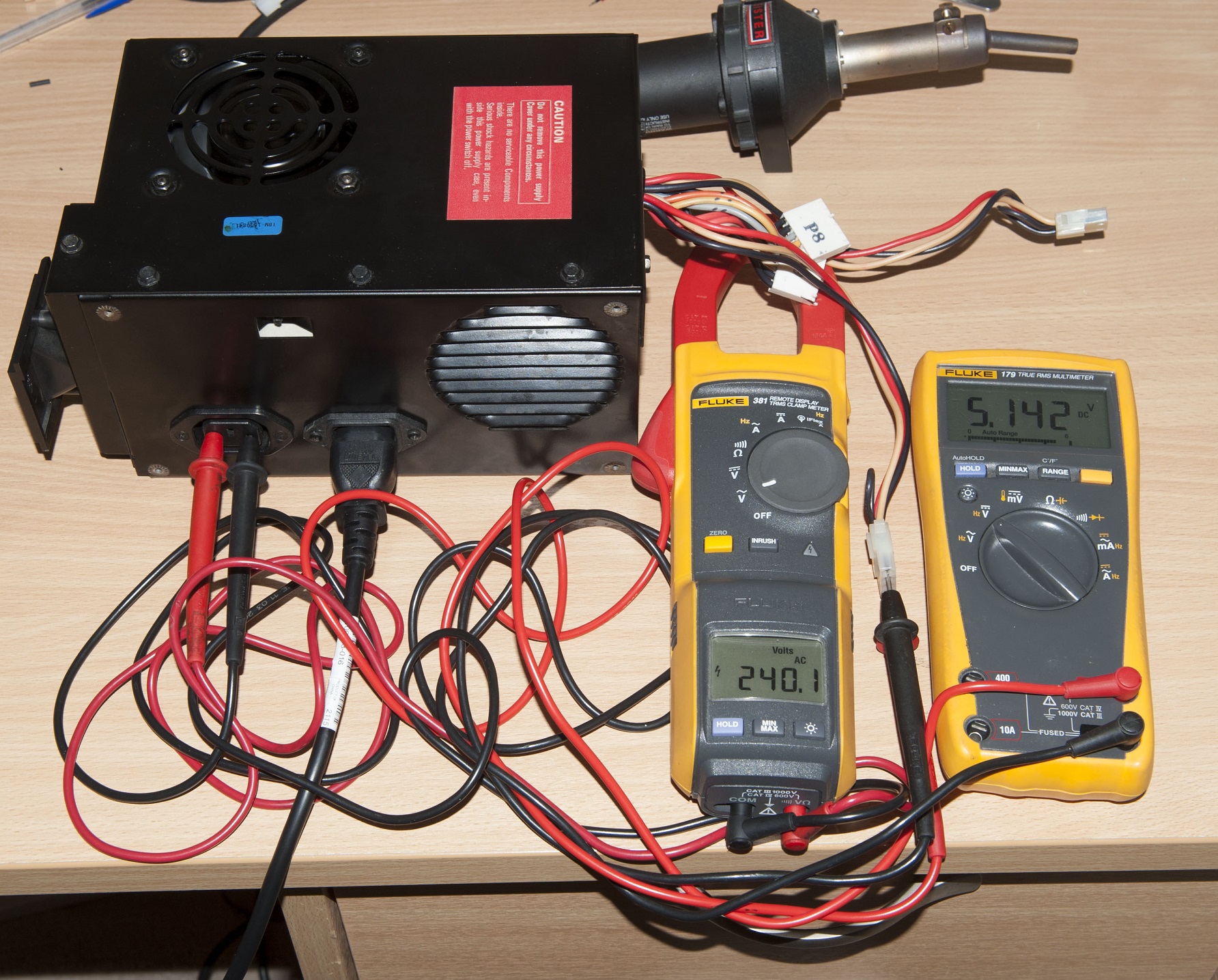
And he returned the power supply to the computer. After this, one oddity was discovered: a beeping sound disappearing after a slight increase in the load at the +12 V output. By connecting the oscilloscope to the +5 V output, the author found this:
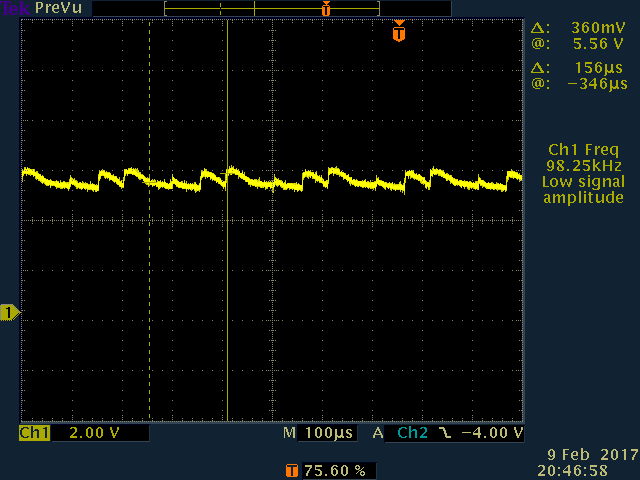
This was lost to the ESR electrolytic capacitors on the secondary side. After replacing them, the problem disappeared, and everything works as it should.
Thank you all for your attention. And do not stuff 5150 boards beyond measure, the power output of the PSU there is only 63 watts.
